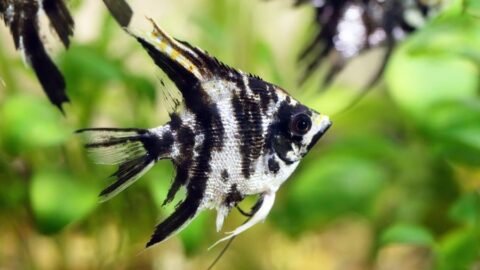
In this guide, we’ll explore common health problems angelfish encounter and how to treat them. Think of it as a simple troubleshooting manual for your aquatic buddy. By understanding these issues, you can help your angelfish thrive, just like any other beloved pet. So, grab a cup of coffee and let’s swim right in!
Poor Water Quality
One of the biggest culprits behind angelfish health issues is poor water quality. It’s like living in a messy room; your angelfish can’t flourish surrounded by pollutants. Regularly checking the water parameters, such as pH, ammonia, nitrite, and nitrate levels, is key. Ideally, angelfish prefer a pH between 6.5 and 7.5.
To tackle this problem, perform regular water changes—aim for 10-15% of the tank’s volume each week. This helps dilute toxins. Additionally, make sure your filtration system is functioning well; a good filter is like a vacuum cleaner for your tank, sucking up debris and keeping the water clear. Don’t forget to use a water conditioner when adding tap water—this step is crucial to remove harmful chlorine and chloramines.
You might wonder, “What if I’ve already tested the water and it seems fine?” Well, sometimes other factors like temperature fluctuations or overcrowding can also stress your angelfish. Aim to maintain a stable temperature around 78°F to 82°F to keep them comfortable.
Ich (White Spot Disease)
Ich, short for ichthyophthiriasis, is a common affliction in angelfish, often showing up as small white spots on their bodies. Think of it as a bad case of the flu. This parasite thrives in crowded or poorly maintained tanks and can spread quickly if not treated.
To address Ich, you can raise the tank temperature gradually (by a few degrees) to accelerate the life cycle of the parasite. This makes it vulnerable to treatments. Copper-based medications or formalin treatments are commonly used as they target the parasite effectively. Just remember to follow the dosage instructions carefully—too much can harm your fish!
In addition, ensure your tank is well-oxygenated and that you avoid overcrowding. Healthy stress-free fish have a better chance of overcoming these illnesses.
Fin Rot
Fin rot is another nasty issue that angelfish can face, often caused by bacterial infections due to stress or environmental factors. Picture your angelfish swimming with frayed edges on its fins, like a worn-out piece of paper. It’s not a pretty sight and can lead to more serious health issues if left untreated.
To combat fin rot, you’ll want to start by assessing water quality—this is a common trigger. Next, consider separating the affected fish to a hospital tank for treatment. You can use aquarium salt or antibacterial medications specifically designed for fin rot. It’s crucial to also improve their environment by keeping the tank clean and ensuring proper filtration.
Feed your angelfish a nutritious diet rich in vitamins and minerals, which can bolster their immune system. Healthy fish are much less susceptible to such conditions.
Swim Bladder Disease
Swim bladder disease is a common ailment among angelfish, affecting their ability to swim properly. Instead of gliding gracefully, a fish with swim bladder issues might float to the top or sink to the bottom. It’s as if they’ve suddenly lost their buoyancy. This condition can stem from overfeeding or poor water quality.
If you suspect swim bladder disease, first check their diet. Ensure you’re not overfeeding and that the food is high-quality. You might also want to fast your fish for a day or two to give their system a break.
Soak some peas in water, then peel and chop them up. Offering these can help clear out their system. If the problem persists, consider using medications designed for swim bladder issues or consult with an aquarium vet.
Cloudy Eye
Cloudy eye is characterized by a haze or film over your angelfish’s eyes. It can be alarming, making your fish look a bit ghostly. This condition can be caused by a few factors, including poor water quality, injury, or even nutritional deficiencies.
To address cloudy eye, start by improving the water quality. Make sure to eliminate any ammonia and nitrite. Next, inspect your angelfish for potential injuries. If it’s a minor scrape, it should heal over time, but keep an eye on it. For nutritional support, adding a variety of foods can ensure your fish is getting a balanced diet.
If these adjustments don’t help, there are antibiotic solutions available at pet stores that target bacterial infections, which might be the underlying cause of the cloudy eye.
Taking care of angelfish can be incredibly rewarding, but it’s not without its challenges. Understanding common health problems in angelfish and knowing how to treat them is essential for keeping your little aquatic companion in tip-top shape. Remember to regularly check water conditions, provide a balanced diet, and observe your fish for any signs of distress.
Every fish is unique, and a little attention can go a long way. With the right care and a watchful eye, your angelfish can thrive, adding beauty and joy to your home for years to come. So, keep that tank clean, feed them well, and enjoy watching your angels swim!
